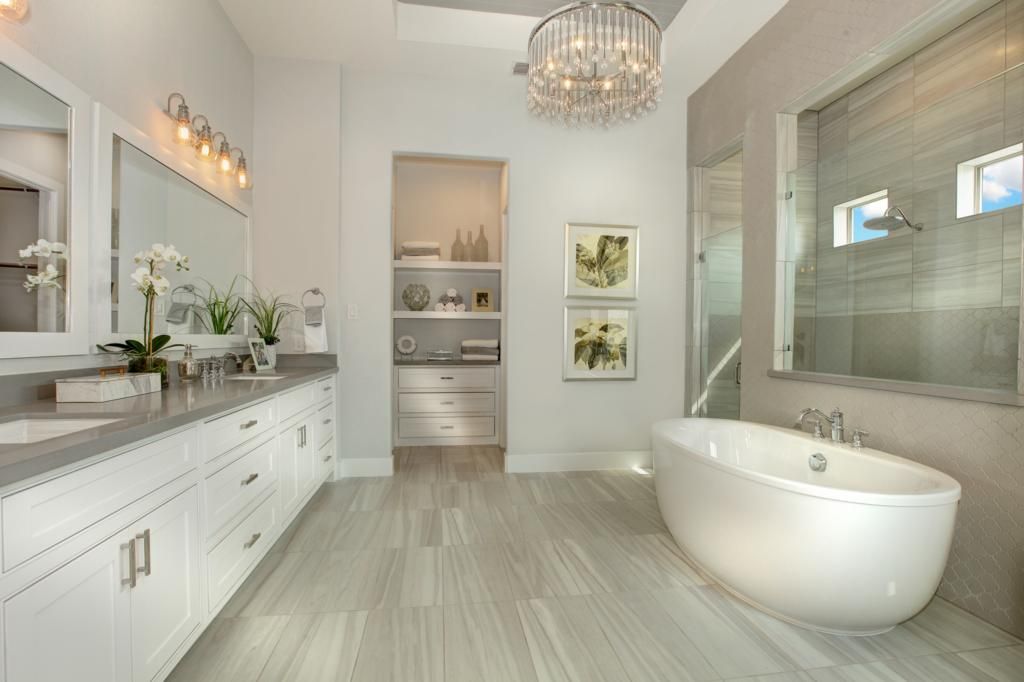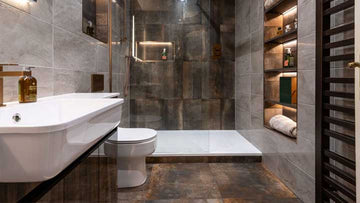In recent years, AI in bathroom design has emerged as a game-changer, revolutionizing the way we perceive and interact with our personal spaces. The integration of artificial intelligence into bathroom design is not just a trend; it represents a significant leap towards a more efficient, personalized, and futuristic experience. For those involved in the industry QA, understanding this transformation is crucial.
Imagine walking into a bathroom that intuitively adjusts the lighting based on your mood or plays your favorite song as soon as you enter. With AI, these scenarios are becoming a reality. The technology is crafting a new frontier in bathroom design, focusing on enhancing user comfort and efficiency.

The Role of AI in Modern Bathrooms
Artificial Intelligence is no longer confined to tech gadgets and industrial applications. Its integration into home and personal spaces, particularly bathrooms, opens up a plethora of possibilities. The primary goal is to create an environment that is both smart and responsive to the user's needs.
AI can optimize water usage, monitor and maintain hygiene, and even suggest energy-efficient practices. This not only enhances the user's experience but also contributes to environmental sustainability. For instance, smart showers and faucets powered by AI can adjust water pressure and temperature based on user preferences, thus conserving water and energy.
Smart Features Powered by AI
One of the most significant contributions of AI in bathroom design is the introduction of smart features. These include everything from automatic lighting and climate control to digital mirrors and voice-activated assistants. Each feature aims to make daily routines more convenient and enjoyable.
Digital mirrors, for instance, can display weather updates, news, and even function as a personal assistant, helping users manage their schedules. Furthermore, AI-driven climate control systems ensure that the bathroom remains at the perfect temperature, providing maximum comfort.
For more insights on smart bathroom technology, you can visit our Smart Bathroom Technology blog.
Implications for Industry QA
For professionals in the Quality Assurance sector, the integration of AI in bathrooms presents unique challenges and opportunities. Ensuring that these tech-driven designs meet safety standards, function efficiently, and offer a seamless user experience is paramount.
Quality assurance teams must be adept at testing AI systems for reliability and performance. This involves rigorous testing protocols, including stress tests and user experience assessments. The goal is to ensure that every aspect of the AI system functions as intended, providing a safe and satisfying user experience.
It's essential for QA professionals to stay updated with the latest advancements in AI and smart technology. For more on eco-friendly smart bathroom designs, you can explore Eco-Friendly Smart Bathroom Design.
Future Trends in AI-Driven Bathroom Design
The future of bathroom design is undoubtedly intertwined with AI and smart technology. As these technologies evolve, we can expect even more innovative solutions that cater to both aesthetic and functional needs.
Upcoming trends may include AI systems capable of health monitoring, such as tracking hydration levels or analyzing skin conditions. These advancements will not only improve personal health but also transform bathrooms into wellness hubs.
To explore more ideas on stylish and functional bathroom designs, check out Walk-In Shower Ideas.
Conclusion
The integration of AI in bathroom design represents a significant shift towards smarter, more personalized living spaces. For industry QA, this means adapting to new testing methodologies and ensuring that these innovations meet the highest standards of quality and safety. As we look to the future, embracing these technological advancements will be key to staying ahead in the ever-evolving landscape of home design.

FAQ Section
What are the benefits of AI in bathroom design?
AI in bathroom design offers numerous benefits, including improved energy efficiency, personalized user experiences, and enhanced comfort. It can optimize water usage, adjust lighting and climate settings, and even provide health monitoring features.
How does AI contribute to environmental sustainability in bathrooms?
AI helps in reducing water and energy consumption by optimizing usage based on user preferences. This contributes to environmental sustainability by conserving resources and reducing the carbon footprint of households.
What are some challenges in implementing AI in bathroom design?
Challenges include ensuring system reliability, meeting safety standards, and providing a seamless user experience. Industry QA plays a crucial role in testing and validating AI systems to ensure they function as intended.






